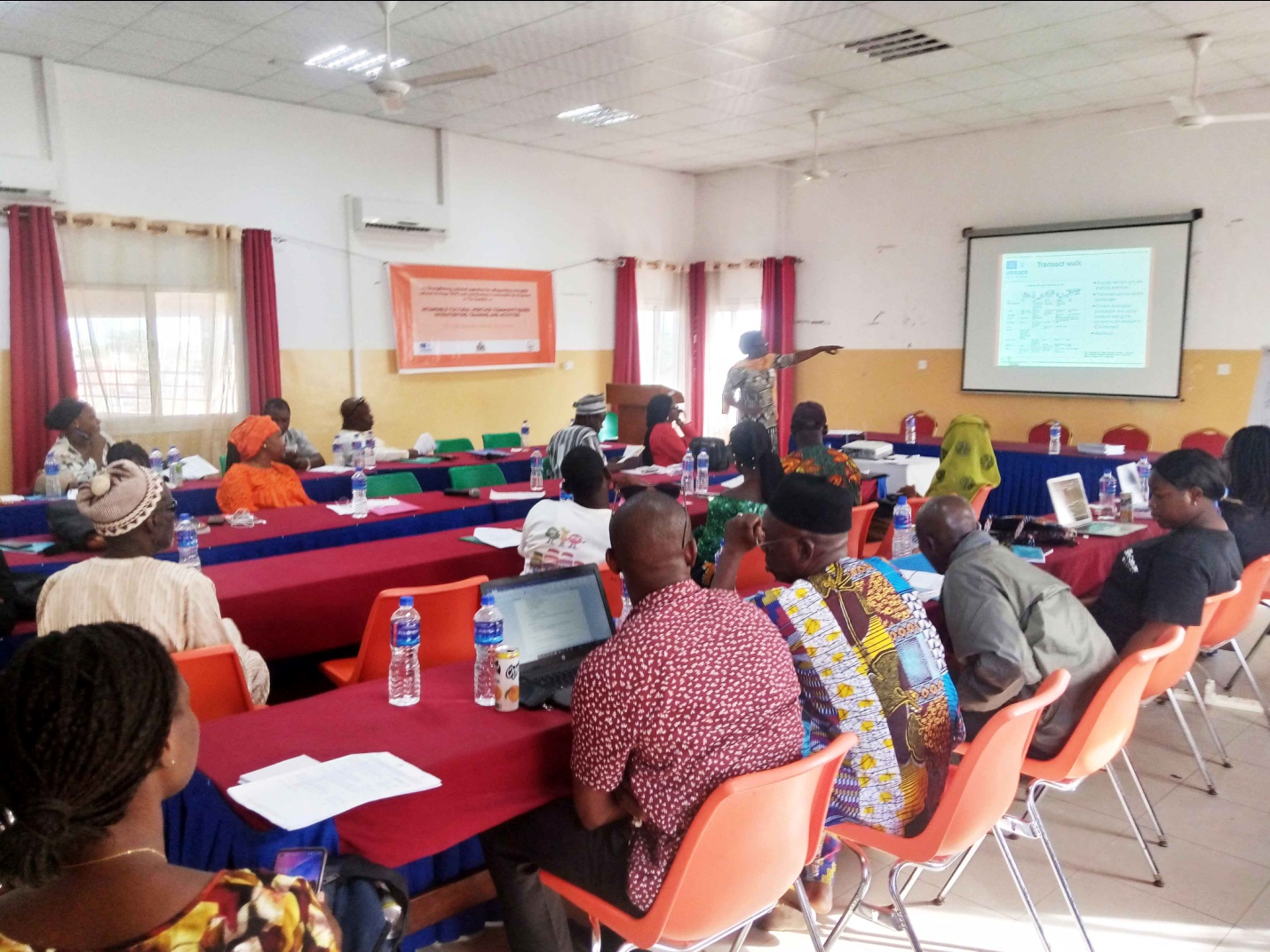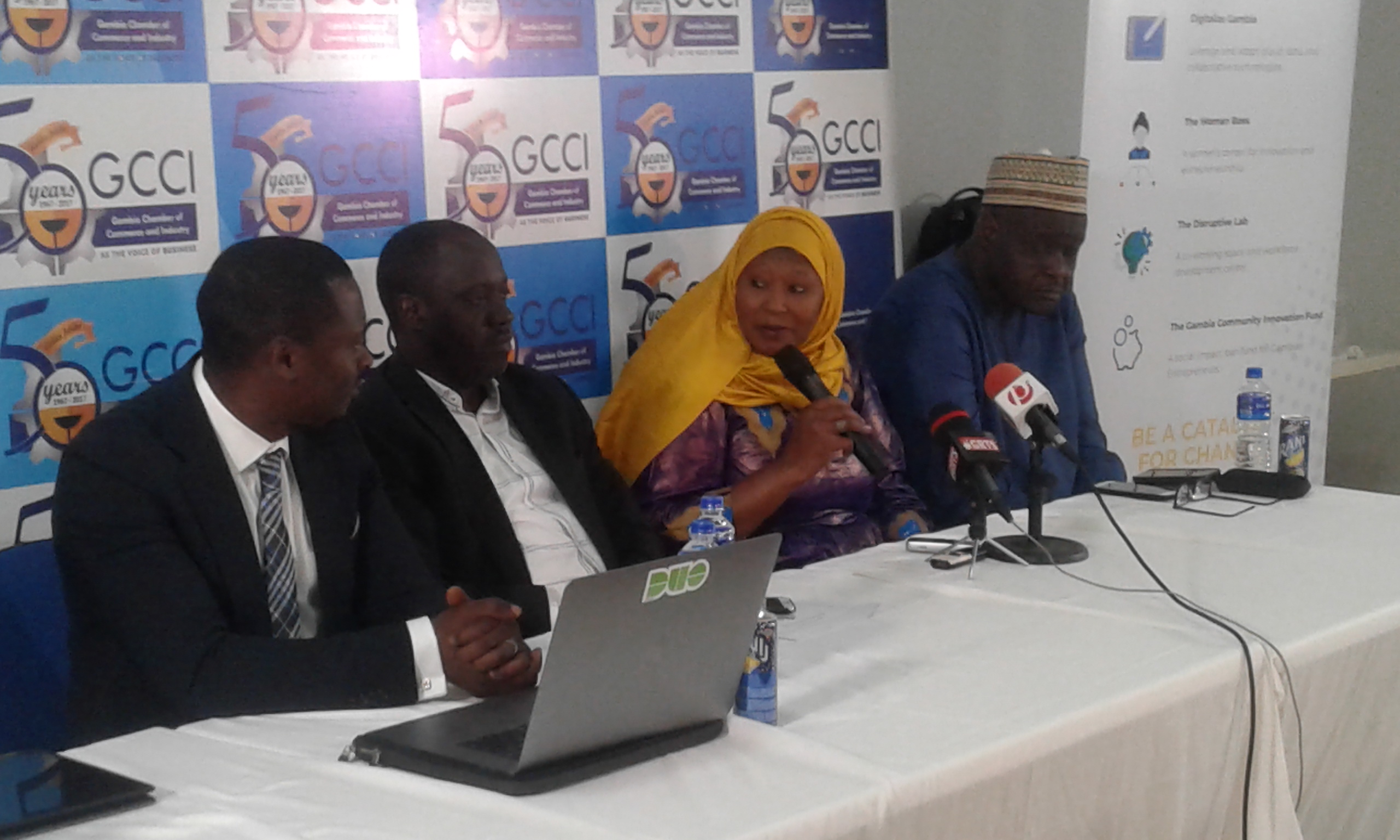By Yunus S Saliu
Emily Drani an Intangible Cultural Heritage (ICH) Facilitator at the ongoing ICH training centered on Intangible Cultural Heritage Community-Based Inventorying has dilated on the relevance of cultural heritage in contemporary development to the trainees.
The two-week training held at the NaNA Complex in Bakau is part of the UNESCO project titled Strengthening National Capacities for Safeguarding Intangible Cultural Heritage and Contribution to Sustainable Development in The Gambia. It is organised by the National Centre for Arts and Culture in conjunction with UNESCO Office, Dakar, and brought together different stakeholders that include heritage experts, community representatives, and key government technical staff.
In the first part of the training for the community-based representatives and key government technical staff commenced on 7th December, Madam Drani said cultural heritage can be tangible or intangible.
She took her time to explain the different meanings of heritage saying “tangible cultural heritage includes buildings, monuments, landscapes, works of art, and artifacts among others while the intangible cultural heritage includes traditions, values, beliefs, system, language, folklore (music, dance, drama), knowledge and skills, and natural heritage where it includes culturally-significance.”
However, she noted that Intangible Cultural Heritage (ICH) according to the 2003 Convention – article 2.1, “ICH means the practices, representations, expressions, knowledge, skills – as well as the instruments, objects, artifacts and cultural spaces associated therewith – that communities, groups and, in some cases, individuals recognize as part of their cultural heritage.
“ICH is transmitted from generation to generation, is constantly recreated by communities and groups in response to their environment, their interaction with nature and their history, and provides them with a sense of identity and continuity, thus promoting respect for cultural diversity and
“ICH that is compatible with existing international human rights instruments, as well as with the requirements of mutual respect among communities, groups and individuals, and of sustainable development.”
Madam Drani also explained that ICH is categorized into 5 domains which are one, oral traditions and expressions, including language as a vehicle of the intangible cultural heritage; two, performing arts; three, social practices, rituals, and festive events; four, knowledge and practices concerning nature and the universe; and five is the traditional craftsmanship.
Among other reasons for safeguarding ICH, she said is to restore and reaffirm a sense of cultural identity, dignity, social cohesion, peace, and nation-building; a source of creativity and innovation – opens up new opportunities; supports cultural exchange and diplomacy.
Also, she added that it contributes to SDG4.7 (quality education) and SDG11 (sustainable cities + communities), among others; source of alternative ways of learning through the transmission of cultural knowledge and skills; addresses the identity crisis and disconnection – between living heritage and religion, education and modernity.
However, she highlighted the conductive policy framework and infrastructure, challenges, integrating ICH in a national framework, and supporting ICH integration.





